Hi! My name is Christy and I’m a conservation intern here at the Batten Conservation Complex. Over the past eight months I’ve been working on a research project at The Mariners’ Museum and Park for the final year of my graduate program at Durham University. This project has involved a condition analysis and investigation of potential treatments for the Princess Carolina timbers which are currently deteriorating because of acid formation.
Although my time as an intern is almost up, we have recently found out that I’ll be able to continue my work here next year! The Mariners’ has been named one of six museums to receive the Kress Conservation Fellowship which provides funding for a post-graduate fellow at the Museum. I will serve as that fellow as I continue the exciting research I’m about to tell you all about!
Background
Princess Carolina, also known as the “Ronson ship”, was a South Carolina owned transatlantic trading vessel during the 18th century. She was damaged in 1729 which eventually led to her use as fill material during land expansion efforts in the mid-eighteenth century in Manhattan (Riess, 2015). In 1985, after partial excavation and conservation, over 330 timbers from the ship’s bow structure were brought to The Mariners’ Museum, Figures 1-2 (Riess, 2015). After additional conservation, the timbers were placed in storage. In recent years, Museum staff have noticed precipitates forming on the wood that are concerning. The precipitates are believed to be indicative of an issue common in recovered shipwrecks: acidification of marine wood due to sulfur oxidation.
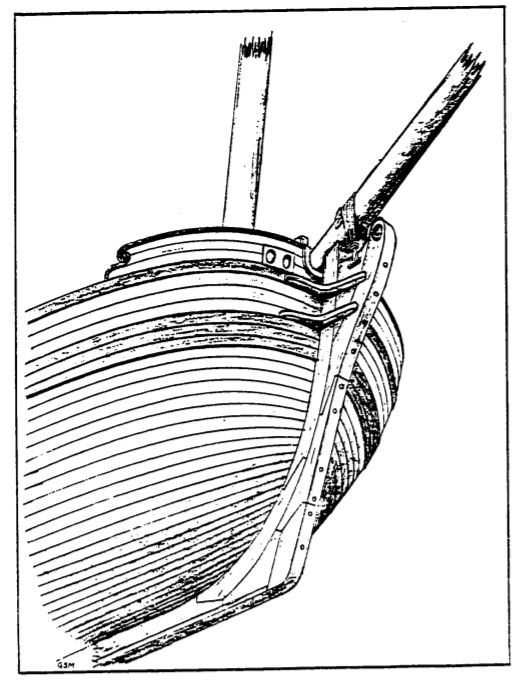
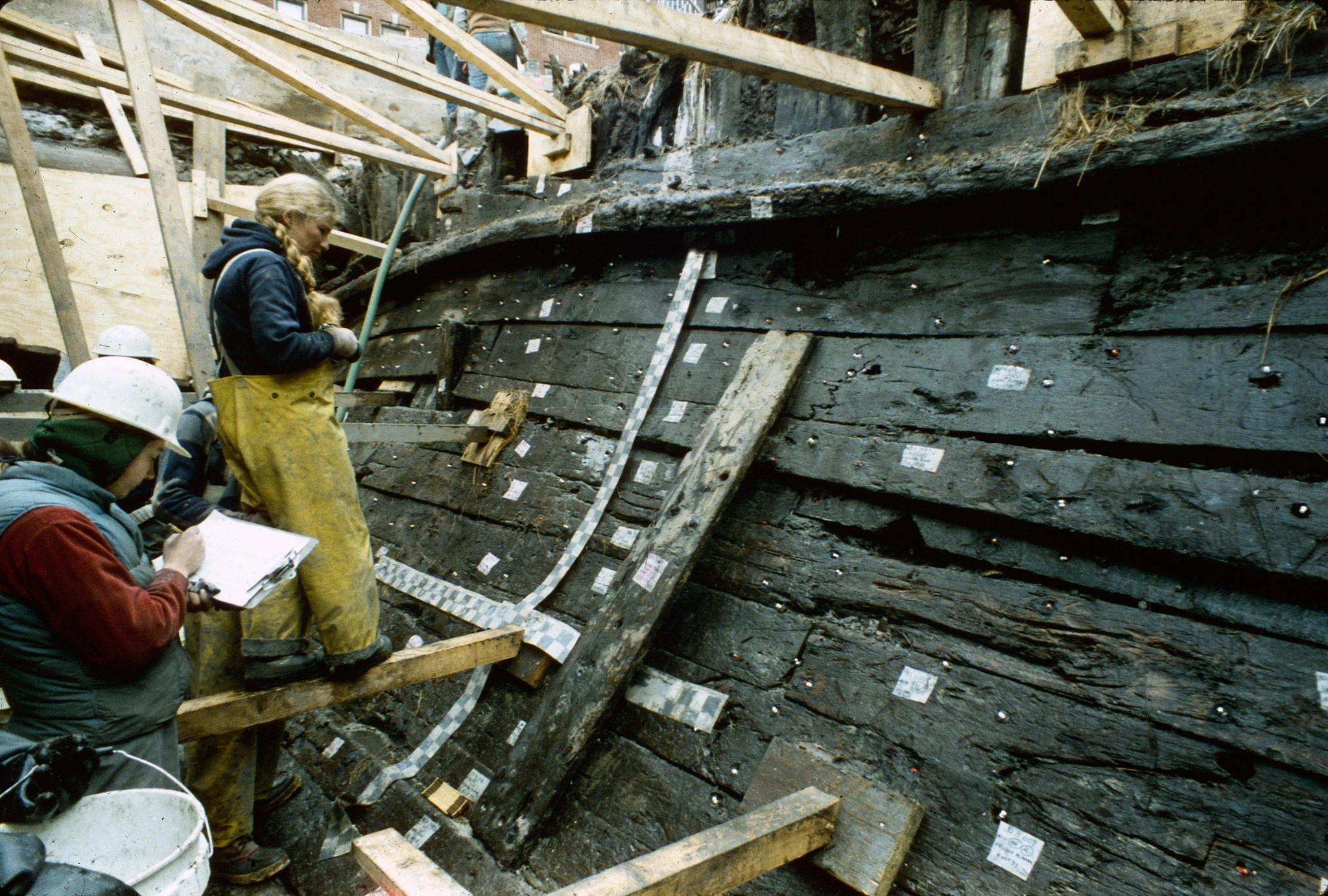
Acidification of maritime timbers is a problem that many comparative shipwrecks such as Mary Rose and Batavia are currently facing. This issue stems from the burial environment (Sandström et al., 2003). Essentially, reduced sulfur species penetrate the wood while it’s underwater (Sandström et al., 2003). After the timbers are removed from the water and exposed to the atmosphere, the reduced sulfur species can regenerate to sulfate forms as they oxidize to sulfuric acid (Sandström et al., 2003). This process typically happens when the relative humidity exceeds 60% and/or in the presence of iron ions, which act as a catalyst (Sandström et al., 2004). As a result, the acidity degrades the wood resulting in spongy-like areas that have lost mechanical strength and precipitates form, Figure 3 (Sandström et al., 2004).
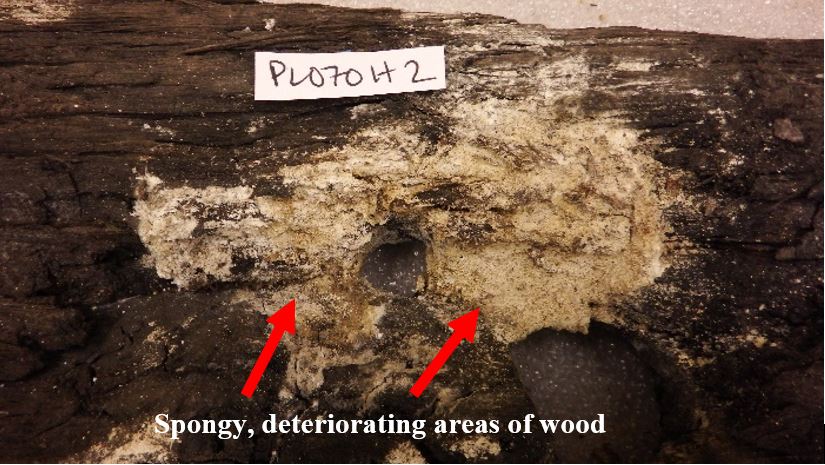
Princess Carolina Project: Phase I
My project is to assess the deterioration happening in the Princess Carolina timbers because of this process and investigate potential treatment options. With the help of our Material Cultural Specialist Hannah Fleming, we chose several small timbers to use during this project that were not structurally significant to the ship, Figures 4-5.
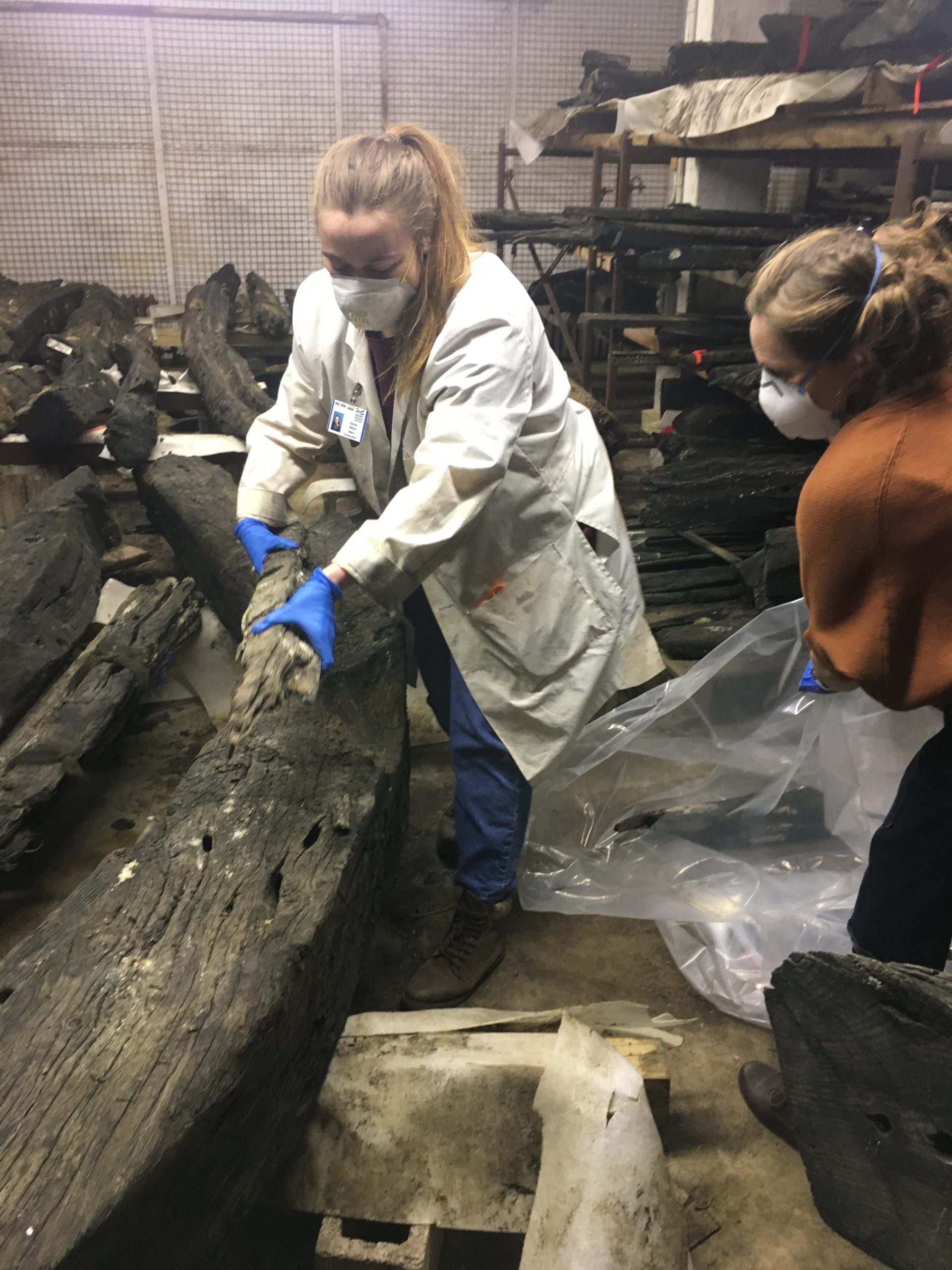
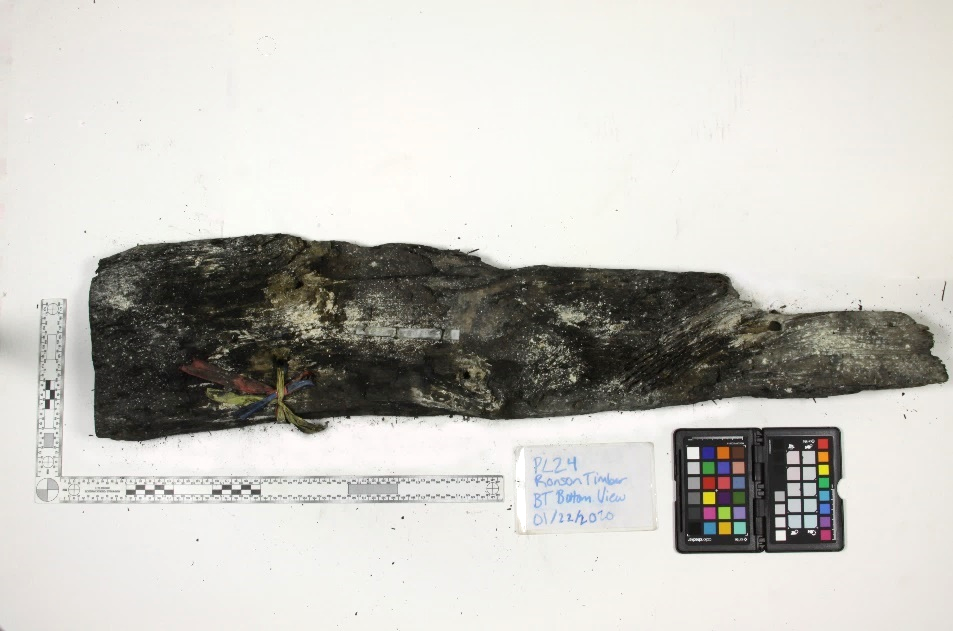
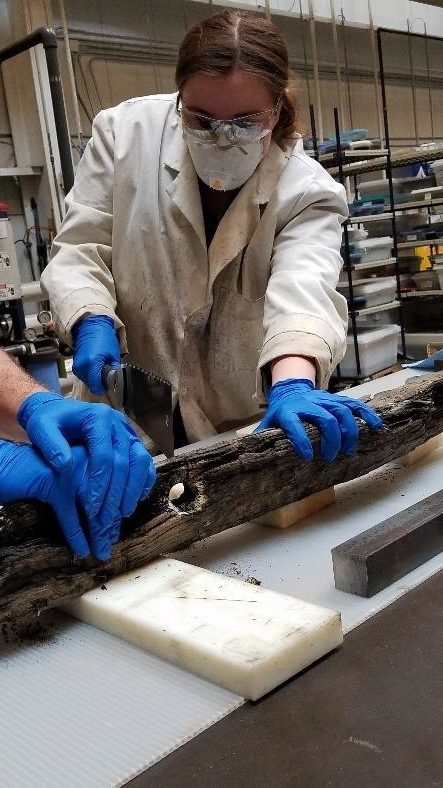
The first step in this project was to determine how acidified the timbers were. We created a pH survey that would assess three factors: (1) acidification depth (2) small timber acidification and (3) large timber acidification. After several discussions about ethics and curator approval, we decided to cut one timber to measure pH at incremental depths, Figure 6.
I then measured the pH of different areas of the small timbers we had brought up from storage and several of the large timbers still in storage. From these surveys, it was clear that acidification was occurring and was a significant concern (the average pH was about 2-3 while it should be closer to 5 for American white oak, the species that the majority of the timbers are). We had several additional interesting findings including that the timbers seemed to be more acidified at the surface, the acidification was a localized issue (oftentimes occurring around the fastener holes), and that the small timbers tended to be more acidic than the large timbers tested.
Next, I wanted to look at the deterioration occurring on a micro-scale. We submitted several samples to Nanoscience Instruments Inc. who kindly ran our samples in a scanning electron microscope (a fancy piece of equipment that shoots electrons to a sample which provides a very close-up image while also being able to analyze the elements present). When looking at the timber samples with this technology, we were able to see that we had elemental sulfur and iron/sulfur compounds present in the cell structure of the wood, Figure 7. It was extremely exciting to see exactly what was happening so close-up and confirm that the timbers presented sulfur related issues (science is awesome)!
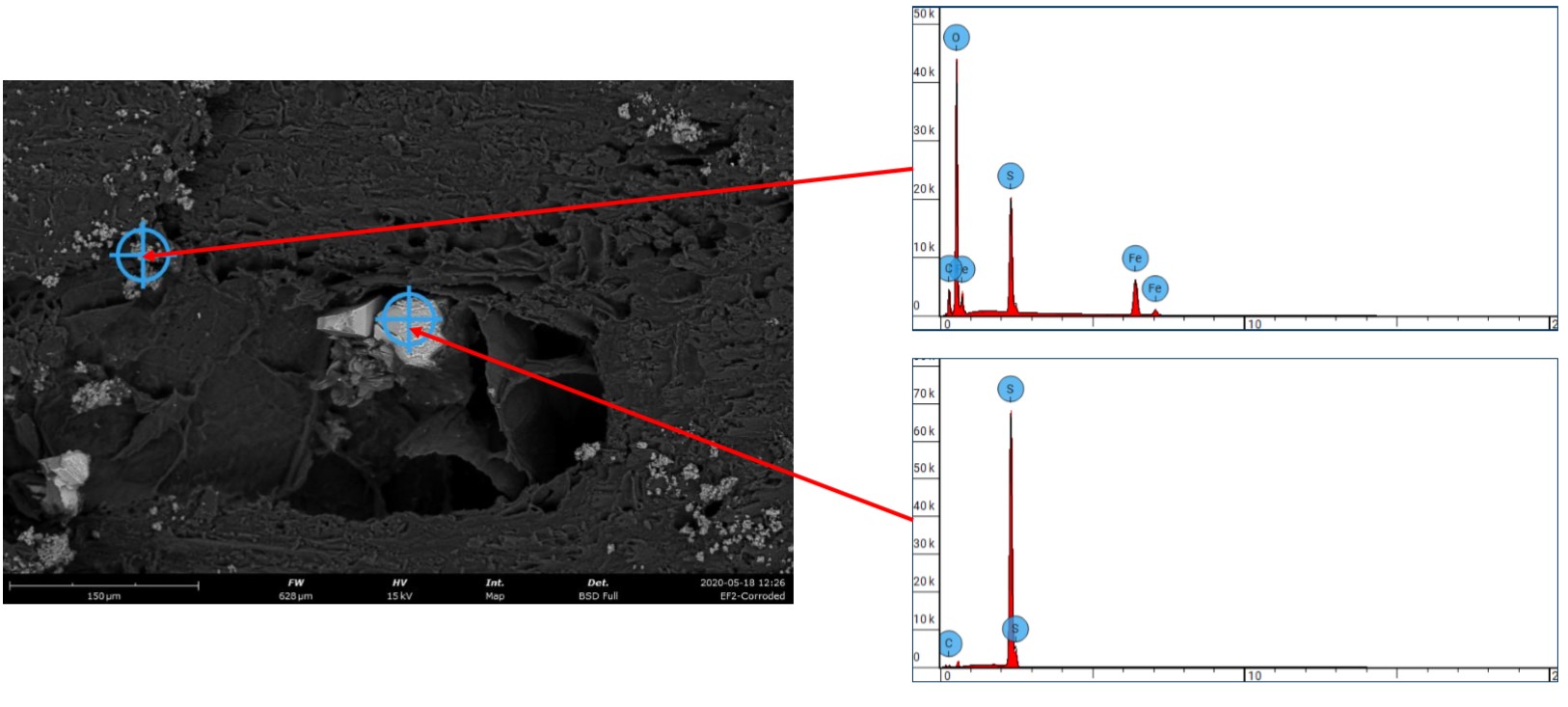
We had planned to do further analyses at the College of William and Mary’s Applied Research Center in order to specifically identify the crystalline forms (not just the elements but how they are intertwined) of the precipitates since it could orient treatment options. Unfortunately, the Covid-19 situation put a momentary hold on this part of the fun…More to follow though!
The current step I’m working on is cleaning the timbers to prepare them for the second part of this project (the experiment). In Figures 8-9 you can see a bit of the cleaning in process. Although this step isn’t yet complete, it shouldn’t take too long to finish up once we return to the Museum and then I’ll be ready to move on to the next phase of the project!
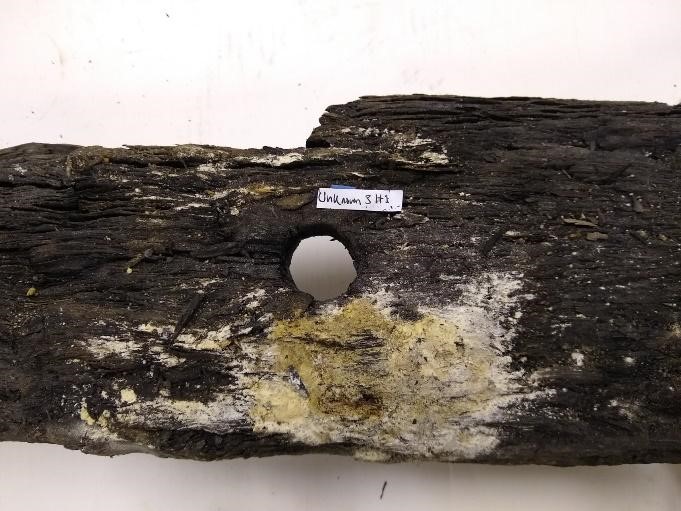
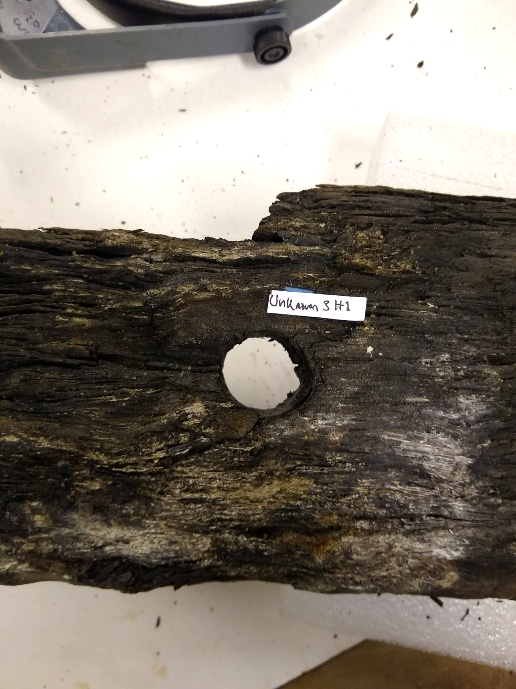
Princess Carolina Project: Phase II
The next big step in the project will be conducting an experiment to assess different treatment options to stabilize the timbers. I spent quite a while researching what we should test; it was important to ensure I was investigating our most promising options so our collection can be well-preserved for many years to come! After several deep dives into the conservation literature and many discussions with my advisor Elsa, we decided on five candidates: 3 nanoparticle compounds and 2 more standard products. Each of these chemicals are bases, meaning they have high pH and will be able to neutralize the acid present in the wood and prevent further deterioration. We’ll be testing them in several different ways to not only build on the research already out there, but to also ensure we can determine the most appropriate solution.
You may be wondering why we’re testing nanoparticles, sounds pretty interesting right? Well nanoparticles have the advantage of being able to penetrate farther into materials than larger molecules and they have a more active surface than regular products meaning lower concentrations are more efficient. These properties are especially beneficial because many of the bases we’re testing are insoluble in common solvents, making penetration into the timbers a concern.
When we return to the Museum, I’ll begin testing by treating fastener holes on the timbers with the 5 different products. The fastener holes were chosen for testing because they can be easily cut to assess how well each treatment works and tend to be the most acidified areas of the timbers, Figure 10. After the timbers are treated, I’ll cut each fastener hole and measure the pH at several depths over a period of months to assess how well each treatment works both in the short and long term. This information will serve as the basis for my fellowship as we continue building our plan for the larger treatment of the collection.
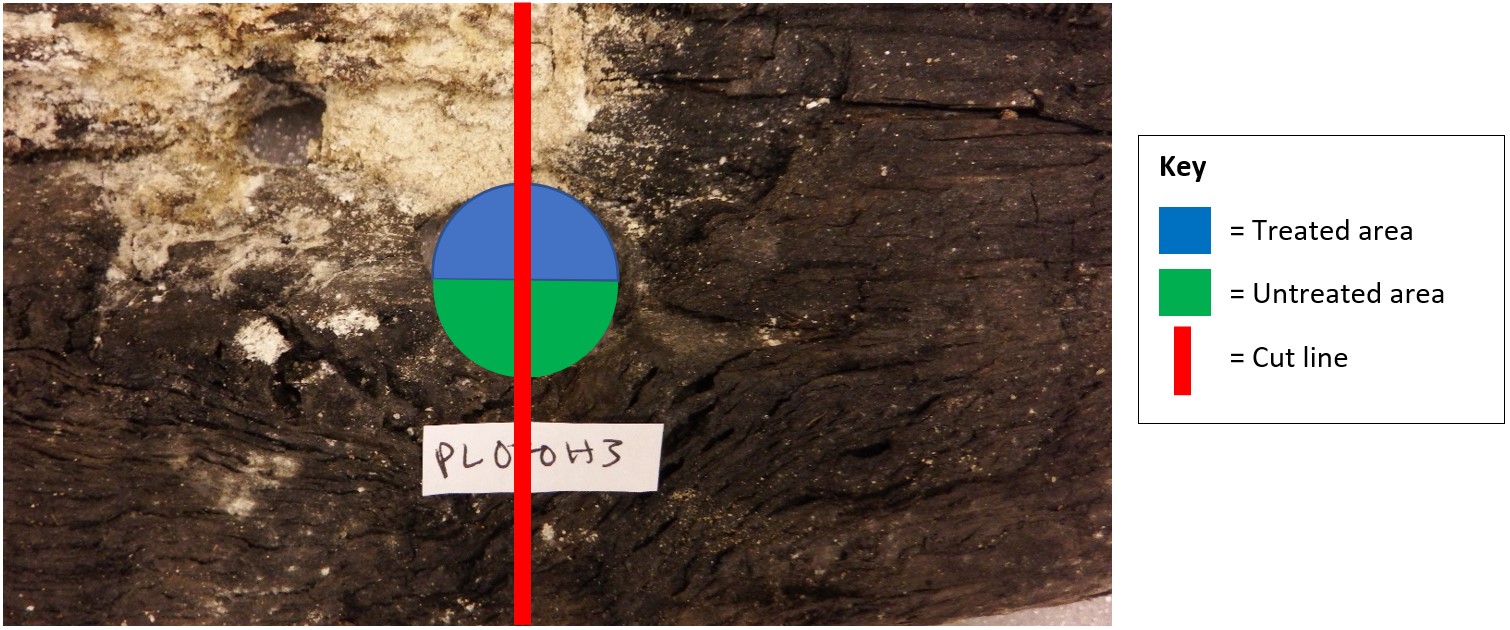
Next Steps
As I continue into my fellowship in the fall, I’ll be able to build on the research we have gained from Phases I and II of this project. During this time, I’ll begin looking into the treatment of the wider range of timbers in the collection while also continuing to advance our knowledge of how to carry out treatment most effectively. As my research progresses, I hope to present what we’ve learned at several conferences so we, at The Mariners’ Museum and Park, can help move forward the field in our knowledge of this issue as we work to preserve these incredible maritime collections!
I’m happy to answer any questions and stay safe everyone!
Sources
Riess, Warren (1987) “The Ronson ship: The study of an eighteenth century merchantman excavated in Manhattan, New York in 1982.” Doctoral Dissertation. 1527. https://scholars.unh.edu/dissertation/1527.
Riess, Warren & Smith, S. (2015) Ship that Held up Wall Street: the Ronson Ship Wreck. College Station: Texas A&M University Press.
Sandström, Magnus, Fors, Y., & Persson, I. (2003) The Vasa’s New Battle : Sulfur, Acid and Iron. Stockholm: National Maritime Museums.
Sandström, Magnus, Fors, Y., Jalilehvand, F., Damian, E. & Gelius, U. (2004) “Analyses of Sulfur and Iron in Marine-Archaeological Wood.” In P. Hoffman, Straetkvern, K., Spriggs, J., Gregory, D. (Eds.), Proceedings of the 9th ICOM Group on Wet Organic Archaeological Materials Conference, Copenhagen, 2004, Bremerhaven: ICOM International Committee for Conservation Working Group on Wet Archaeological Materials, pp. 181-202.